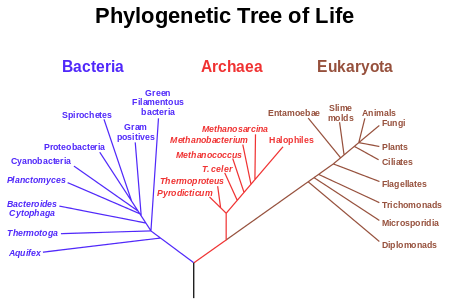But the common ancestor lies at the 'root' of the evolutionary tree doesn't it?
What is an evolutionary tree?
On a grand scale, the process of
speciation leads to an
evolutionary pattern that is something like a forking road. A
lineage may persist for many generations and then split, with each resulting lineage taking its own path. Some paths end up leading to dead-ends (i.e.,
extinction); others
diverge many more times, leading to new lineages. The result of this process is a tree-like structure that links together all
species that have ever lived on planet Earth.
Imagine if we humans could turn around and walk backwards on the branch of our own evolutionary history. We'd soon meet up with routes leading to our now-extinct
hominin relatives, and then greet the ancient ancestors of chimpanzees and bonobos as our routes converged.
Eventually, we'd be crossing paths with ancient ancestors of birds and dinosaurs, then the ancestors of sharks, starfish, insects, and plants, ultimately, reaching the point where all evolutionary paths converge — the single-celled organisms that are the great-great-great-great-great … great-grandparents of all species that have ever lived on Earth.
Evolutionary trees, also known as phylogenetic trees, are visual representations of this branching pattern of evolution.1 A phylogenetic tree may represent the full diversity of life springing from our universal
common ancestor (as does the tree above) or a single branch of the full tree of life, such as the vertebrate, fungus, or beetle lineages. Trees may include both
extant and extinct organisms. As shown here, there are many ways to depict an evolutionary tree.
What is an evolutionary tree?






